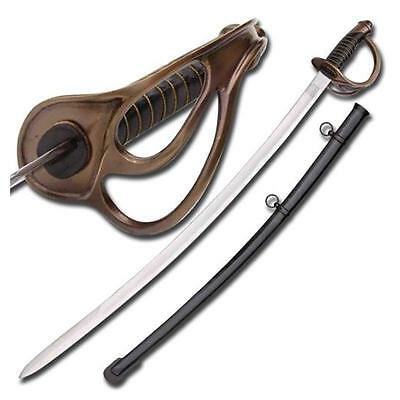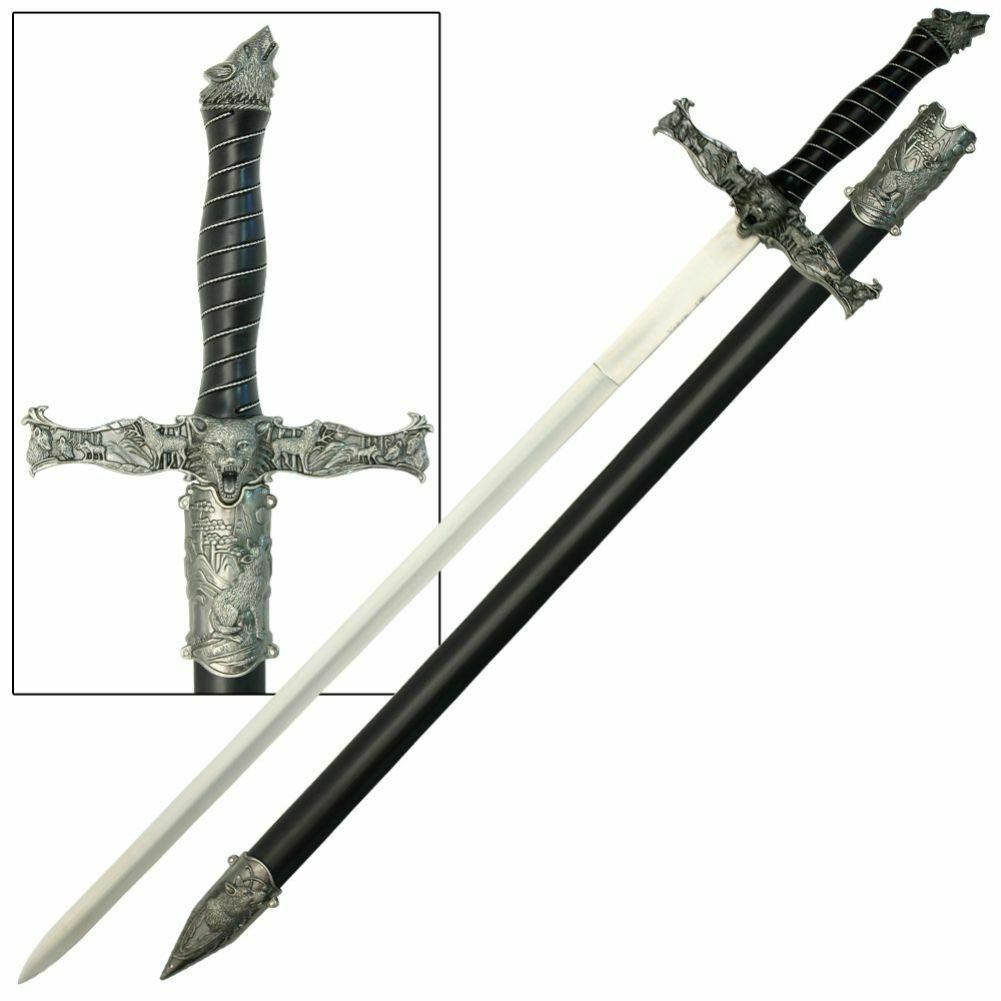-40%
NICE British CAVALRY Sword Regimentally Marked 16th LANCERS Antique 160 year OLD
$ 3482.16
- Description
- Size Guide
Description
AWESOME XVI 16th Lancers Officer's Levee Sword 1860's MAMELUKE Sabre SPECTACULARAn extraordinarily elaborate and VERY RARE 16th Lancer's (Queens Own) Officer's Full Dress Levee Sword
**160 - 187 Years-OLD**
The
VERY FINELY etched
80cm (31.5in)
deeply-curved
un-fullered blade signed
Rogers & Co 30 King St, Covent Garden, London
,
1834-1852 (Later to become
Hamburger Rogers & Son
) with Queen Victoria's crown VR and XVI Lancers cyphers within typical trophy motifs and foliate scrolls
EXQUISITELY **hand-engraved**
by a
MASTER ENGRAVER
(Not acid-etched), with spear point, original steel scabbard with gilt brass pierced mounts the wonderfully age-patinated horn grip with Gothic cross-guard and pierced finials, lion or leopard head (Gargoyle?)
Gilted Guard and Pommel = a BEAST with MASSIVE FANGS
AGE = Circa
1834-1852 (Became Hambuger, Rogers, & Son in 1852)
The 31.5" blade SITS very snugly in its original scabbard which is free of any significant dings or dents
Hilt and Hand-guard are
100% FIRM on the blade
, with a small amount of "play" in the pommel
NO bends NO Nicks NO serious Rust NO Pitting NO cracks NO nasty sharpening marks
This blade came out of a New Zealand families deceased estate, many decades ago, sadly then with no provenance ("history") of the officer who once owned this magnificent sword
It has been in a private collection now for many years and is
FIRST TIME ON THE LOCAL or INTERNATIONAL MARKET
This MAGNIFICENT genuine antique Mameluke Saber would
enhance ANY sword collection or Museum
Display
HISTORY of the 16th Lancers service during the Victorian era (1837-1901)
The regiment was dispatched to Ireland in March 1816 where it was re-designated as a lancer regiment in September 1816, becoming the 16th (The Queen's) Regiment of (Light) Dragoons (Lancers). It returned from Ireland in June 1819. The regiment was sent to India in 1822 and saw action, using lances, against the Marathas at the siege of Bharatpur in January 1826. It saw action again at the capture of Ghuznee in July 1839 during the First Anglo-Afghan War and at the Battle of Maharajpore in December 1843 during the Gwalior Campaign. It also took part in the Battle of Aliwal in January 1846, when the regiment charged and dispersed a body of Sikhs ten times its size, and also fought at the Battle of Sobraon in February 1846 during the First Anglo-Sikh War. The regiment's title was simplified to the 16th (The Queen's) Lancers in 1861. It served in India between 1865 and 1876 and again between 1890 and 1899.
The regiment landed at Cape Colony in January 1900 for service in the Second Boer War and took part in the relief of Kimberley in February 1900.
EARLIER HISTORY
The 16th The Queen's Lancers was a cavalry regiment of the British Army, first raised in 1759. It saw service for two centuries, before being amalgamated with the 5th Royal Irish Lancers to form the 16th/5th Lancers in 1922.
The regiment was raised in 1759 by Colonel John Burgoyne as the 16th Regiment of (Light) Dragoons, being the second of the new regiments of light dragoons; it was also known as Burgoyne's Light Horse.
The regiment was closely involved, undertaking several cavalry charges, in the action leading up to the capture of the French Garrison of Belle Île in April 1761 during the Seven Years' War. It also made a major contribution to the British victories against the Spaniards at the Battle of Valencia de Alcántara in August 1762 and at the Battle of Vila Velha in October 1762 during the Anglo-Spanish War.
In 1766 the regiment was renamed after Queen Charlotte as the 2nd (or The Queen's) Regiment of (Light) Dragoons, the number being an attempt to create a new numbering system for the light dragoon regiments. However, the old system was quickly re-established, with the regiment returning as the 16th (The Queen's) Regiment of (Light) Dragoons in 1769.
The regiment arrived in New York in October 1776 for service in the American Revolutionary War. It was involved in fighting at the Battle of White Plains in October 1776, the Battle of Brandywine in September 1777 and the Battle of Germantown in October 1777 before seeing more action at the Battle of Crooked Billet in May 1778, the Battle of Barren Hill later that month and the Battle of Monmouth in June 1778.
The regiment returned to England in spring 1779.
The regiment next landed at Ostend in April 1793 for service in the Flanders Campaign and was present at the siege of Valenciennes in June 1793, the siege of Dunkirk in August 1793 and the siege of Landrecies in April 1794. It also took part in the Battle of Beaumont in April 1794, the Battle of Willems in May 1794 and the Battle of Tournay
20th Century
The regiment landed at Cape Colony in January 1900 for service in the Second Boer War and took part in the relief of Kimberley in February 1900. The regiment, which had been based at The Curragh at the start of the First World War, landed in France as part of the 3rd Cavalry Brigade in the 1st Cavalry Division in August 1914 for service on the Western Front. The regiment was retitled as the 16th The Queen's Lancers in 1921 and amalgamated with the 5th Royal Irish Lancers to form the 16th/5th Lancers) in 1922.
These IMAGES ARE the most IMPORTANT part of my item's CONDITION DESCRIPTION
So if I have failed to show anything clearly ?
Please ASK QUESTIONS (well-prior to auction end) for clarification or ADDITIONAL IMAGES :-)
Do please VIEW my ***23 + years *** FEEDBACK selling history on E-Bay !!
Any questions please MESSAGE ME
Postage
First Class Air Mail (6-10 DAYS)
New Zealand customers FREE Courier NZ{{detail_product_description}}.00
SORRY but New Zealand RESIDENTS must pay GST @ 15% on purchase price Because I must pay GST on all "local sales" :-(
A G.S.T. receipt will be issued on request
Track Page Views With
Auctiva's FREE Counter
Add a map to your own listings. FREE Trial !




















